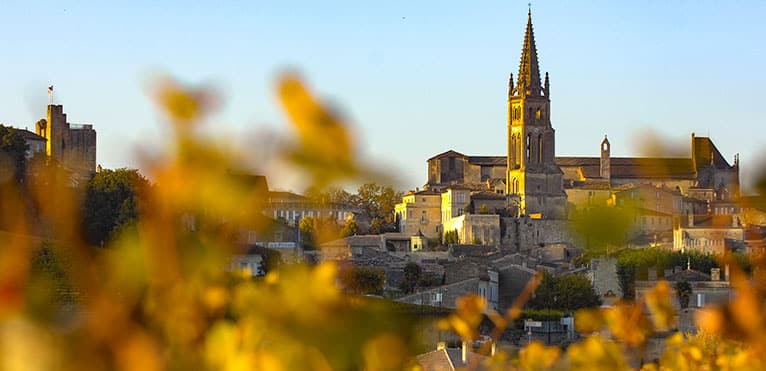
Contents
Côte de Blaye is a Bordeaux appellation. Its region of origin, the Bordeaux vineyards, is a historic and world-renowned wine-growing region. In fact, every year some 5,983,000 hectolitres of the region’s 38 Appellations d’Origine Contrôlée (AOC) are produced.
This quality makes it France’s leading vineyard in terms of volume. It covers an area of more than 117,200 hectares, abounding in an unparalleled diversity of terroirs. Côte de Blaye was awarded the AOC and AOP (Appellation d’Origine Protégée) labels in 1936.
AOC Côte-de-Blaye is a little-known wine
The history of the Blaye vineyards, the subdivision to which Côte de Blaye belongs, is closely linked to that of its wine-growing region, in that the territory in question has always belonged to the same communities throughout the ages. Historians believe that the region’s wine culture dates back to antiquity. This sector is fully integrated into the local and even international economy, thanks in particular to its strategic location close to the Atlantic coast, making it an ideal trading partner for the UK and Northern Europe. In the Middle Ages, Eleanor of Aquitaine gave a real boost to viticulture by facilitating trade with England.
The Blayais region has long been known for its brandy production. From the 1980s onwards, eau-de-vie production was slowly sidelined, and plots were either grubbed up or converted to produce the dry white wines of the Côtes-de-Blaye appellation. It was only then that the reputation of this wine fully developed.
Côte-de-Blaye benefits from optimal winemaking conditions
Côte-de-Blaye is grown and vinified at low altitudes, rarely exceeding 100 meters, on pretty valleys and hillsides that plunge into the river. The soil is mostly composed of singular limestone rocks known as “Blaye limestone”, as well as sandstone materials full of particularly mineral-rich colluvium. These rocks are highly conducive to good vine drainage. Indeed, their porosity prevents water stagnation and they contribute mineral elements to the vines as they erode.
Climatic conditions in the Côtes de Blaye plots are ideal. The climate is generally oceanic and temperate, typical of the Aquitaine region. The sunshine is excellent, heating the plots an average of 240 days a year. Due to its proximity to the Atlantic Ocean, the humidity level is quite high, which adds to the uniqueness of this terroir.
Côte-de-Blaye and its sweetness
Côte-de-Blaye is a blended wine, meaning that its charter allows for the use of several specific grape varieties. The grape varieties used are Colombard B, Ugni B, Sauvignon, Sémillon and Muscadelle. On the other hand, the charter imposes a very demanding cultivation process. Among other things, the best grapes have to be hand-picked, plot by plot and, above all, variety by variety.
To the eye, Côte-de-Blaye reveals a light yellow color with delicate green highlights. On the nose, it reveals aromas very typical of Bordeaux wines. It reveals fine primary notes of citrus, grapefruit or lemon, but also floral aromas with hawthorn, acacia, mimosa and lime blossom. The most seasoned noses will undoubtedly be seduced by the palette of secondary aromas with vegetal notes of cut hay, grass and fern. Some Côte-de-Blaye wines are aged in barrels rather than vats. Then they reveal smoky, vanilla scents. On the palate, Côte-de-Blaye has a smooth attack at first. It then reveals a perfect balance between substance, alcohol and acidity.
In general, we recommend keeping a bottle of Côte-de-Blaye for between 5 and 10 years, a typical ageing potential for good white wines. Kept for over 5 years, Côte-de-Blaye reveals aromas of honey.
A Côte-de-Blaye and pan-fried porcini mushrooms…
Côte-de-Blaye is a dry, still wine. Côte-de-Blaye goes very well with the iodized flavors reminiscent of its native Bordeaux region. This wine is a perfect match for salmon. We suggest pairing scallops with saffron, a piece of Comté cheese, a pan-fried porcini mushroom or an onglet with a Côte-de-Blaye.
Côte-de-Blaye is generally served at around 10°C. Before serving, we recommend decanting to reveal its most subtle aromas.
2012, an admirable year for Côte-de-Blaye
Côte-de-Blaye can benefit from several denominations. Bottles prior to 2009 may mention “Premières Côtes de Blaye”. This name has now been replaced by “Blaye-Côtes-de-Bordeaux”. The years considered as exceptional vintages for Côte-de-Blaye are : 1997, 1998, 1999, 2003, 2006, 2013. It should also be noted that 2012 was an exceptional year.
One of the few châteaux in the Blayais region
Château Haut Colombier
Château Haut Colombier returned to the Chéty family in 1991. This 5-generation winegrowing family, whose members include professors of viticulture, has turned their entrepreneurial skills into a real success story.
Ideally located at the top of On the highest hill in the Blayais region, this Côtes de Blaye vineyard was converted to organic farming in 2011. We can y admire the beautiful sunsets over the estuary.